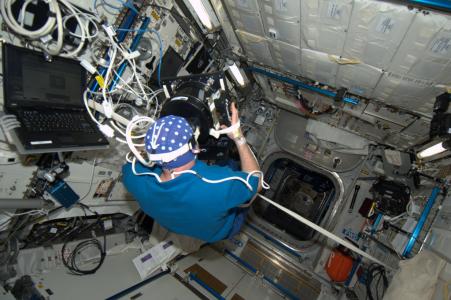Local sleep episodes during wakefulness and long term space travel

The aim of this study was to assess how space travel modifies local sleep episodes in wakefulness during a visuo-motor task and weather this is related to performance. To this end, specific EEG (electroencephalogram) data previously recorded on board the ISS during the Neurospat experiment (AO-2004, 118) were used. EEG markers of high sleep pressure can be observed during wakefulness, by increased theta activity (5-7 Hz), while asleep by an increase of slow wave activity (SWA) (0.5-4 Hz) (Cajochen et al, 1999; Finelli et al, 2000; Borbély et al, 2016), in awake humans alongside the sleep pressure (Fattinger et al, 2017b) and following sleep deprivation (Hung et al, 2013; Bernardi et al, 2015). Local sleep-like events were here detected and characterised (size over the scalp and density per minute) following pre-existing methods (Massimini et al, 2004; Fattinger et al, 2017b) in preflight (on Earth) and inflight (Space 1 and 2) conditions in five astronauts during a period from 250 ms before (i.e. motor action planning) and 500 ms after (i.e. maximal reaction time) a visual stimulus which indicated a manual tracking onset. Reaction times of the motor execution were also calculated.
